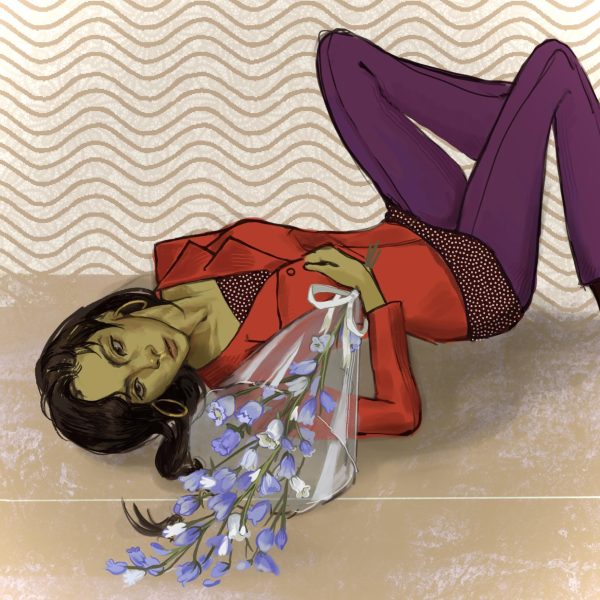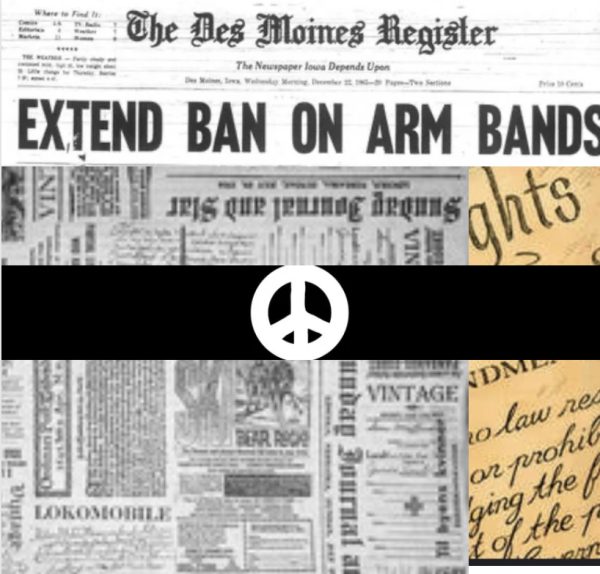La Salle’s Dress Code Unfairly Targets Girls
November 16, 2016
When Portland Public Schools, the biggest school district in the state of Oregon, started this school year, it also instituted a new, much more lenient dress code. This new dress code was decided upon to meet the concerns and desires of parents and students, who felt that the dress code in place in years prior was unreasonable, particularly in the way that it affected female students. The decision that PPS made is directly relevant to La Salle, in that the old PPS dress code restrictions are similar to the policy La Salle has in place currently.
In recent years, Portland Public Schools had been flooded with concerns from parents and students on the dress code policy at the time. They felt the dress code was “anti-girl,” because most of the restrictions pertained to the clothing of female students.
Before this change was made, the dress code for Portland Public Schools was vague, with many restrictions affecting females much more significantly. Although there were some restrictions against any drug and gang related clothing, most of the rules had to do with clothing that was “sexually suggestive,” including bare midriffs, visible bra straps and undergarments, plunging necklines, and any see-through clothing.
After a year of deliberation, PPS came up with a new, gender-neutral dress code, which only prohibits any clothing depicting drugs, sex, and violence. There are no longer limits on, for example, the width of shirt straps or the length of shorts and skirts; requirements that primarily targeted girls. The only requirements are for students to come to school with a shirt that has fabric on the front, back and sides, and bottoms that cover all parts of underwear except for the waistband, and shoes.
This means that students are now able to wear any sort of clothing, including mesh, translucent, and spandex material, as long as genitals are covered with opaque fabric, meaning a fabric that is not see-through. They may now also come to school wearing crop tops, tank tops, and shorts and skirts of any length; yoga pants, leggings and sweatpants are permitted as well.
This change affects more than 49,000 students in 78 different schools and sets an important, positive precedent for how schools should deal with unintentionally sexist dress code policies. Many PPS students and families feel that the new dress code is long overdue, and are pleased with the decision to change the policy, along with how it turned out.
Unfortunately, this new dress code at PPS is in sharp contrast with what we experience here at La Salle. The dress code we have in place is a long list of rules and regulations falling under various categories, many of which disproportionately affect female students. The basics are that shirts must fully cover shoulders, be within 2 inches of the collar bone and meet the top of pants. Skirts and shorts must be no more than 2 inches from the knee, and no athletic pants are permitted.
In the 2016-2017 handbook, there are specific explanations for the rules that are in place: to minimize distractions from a learning environment, to prepare students for life by encouraging personal responsibility and appropriateness, and to reflect the school’s Catholic and Lasallian Mission.
Despite all of the official reasons for why we have so many rules, the reality is that, in my opinion, the effect of the dress code at La Salle is that it unintentionally objectifies and promotes the hypersexualization of girls.
Hypersexualization is when girls are depicted in our culture, unintentionally or not, as being sexual objects, based on their appearance. One example of when this occurs is when a girl is told that what she is wearing is too sexual or revealing because of someone else’s perceptions, and that she must cover up as a result. However, in our culture today people can pretty much see any part of a girl’s body and find some way to make it sexual. This is largely because of media and its portrayal of women in movies, magazines, and commercials. Although I realize that this isn’t the intended message being sent by La Salle, the end result is still the same, that girls are being told they need to cover up in order to not be a distraction.
As a girl at La Salle, I have experienced the difficulties in finding outfits that meet dress code, and feeling ashamed for outfits that don’t. Although I have never been dress coded, I have received a warning telling me that I was pushing it. Being told my skirt is, “pushing it,” in front of a whole class, is humiliating. I was made to feel like I was purposely trying to show off, which was not the case.
This problem doesn’t only exist in schools, but especially in society as a whole. Women all over the world are being blamed for onlookers’ perceptions. We need to reinforce the fact that women are smart and confident, and should be allowed to wear a tank top or yoga pants if that’s what they feel comfortable in, without this being seen as sexual and distracting. Growing up in the culture we live in today is tough. Girls are told from a young age that they have to meet a certain standard to be considered beautiful. For many girls, finding self-confidence is a hard battle, and it takes a toll when they are shamed for what they choose to wear.
Although there are a few rules in the La Salle dress code that pertain to boys, the majority of them affect girls much more significantly. Implementing the rule prohibiting basketball shorts hit many male students at La Salle hard, but it’s still not the same for boys as it is for girls. Boys can go to a clothing store and might easily find many things that are appropriate for school; whereas a girl would have a harder time, because most clothing made for girls nowadays does not meet La Salle’s dress code. Skirts are too short, and shirts are cut too low, and finding a dress that has sleeves is nearly impossible. On ninety degree days, the reality is that the current dress code rules result in girls having to accessorize with scarves to ensure that their outfit meets dress code.
La Salle isn’t the only school with this issue. The problem of unequal dress codes is one that many schools throughout the nation are struggling to solve. Many students in schools are trying to make a change in their schools’ dress code system, and spread awareness of the effects of telling girls that what they are wearing is too revealing. La Salle should take part in this movement to prevent females from feeling like they are being shamed for their bodies, and set an example for other schools in our area, as PPS has.
Although I recognize that La Salle is unlikely to move towards a dress code policy as lenient as the one that Portland Public Schools has adopted, there are still some changes we could make. Changing skirt and short lengths to meet fingertips, and shirts to be able to come three inches from the collar bone would be a good place to start. Some sort of rule that allows tank tops in September and spring months, when it is warmer out, would also benefit students. La Salle could consider adding a legging and sweatpants day on Fridays, or a certain time in which students would be allowed to dress more comfortably in athletic wear. Small changes like these are a great starting point and would emphasize that what students choose to wear does not affect their ability to learn, or the ability of their peers to learn.
Portland Public Schools has already done an outstanding job of setting an example, and it’s true that La Salle did make a significant move in the right direction at the start of last school year, by changing the restrictions on skirt lengths and how low shirts can be. However, there’s still more that can be done. Suggesting that women need to cover up to prevent from being a distraction is an issue that I hope we can find a way to resolve. By acknowledging the messages our dress code unintentionally sends, and taking actions to resolve them, La Salle could reassure girls at our school that they do not deserve to feel inadvertently shamed for their clothing choices.
Overly restrictive dress codes affecting girls are a problem that must be addressed because women are people, not objects, and deserve to be treated accordingly. Making a change in our dress code policy would make it clear that girls at La Salle, and anywhere, for that matter, should not be unintentionally objectified merely for the clothing that they choose to wear.
















Kessler • Nov 17, 2016 at 5:30 pm
Well written Peyton! I can see it is a hot topic for so many and has encouraged excellent dialogue between students. I so appreciate the respectful manner on how everyone is stating their viewpoint.
Maddie Hansen • Nov 17, 2016 at 2:37 pm
I agree with all the things written and I love that someone voiced their opinion finally. It is extremely embarrassing being dress coded and just a few simple things could help solve this… it is especially hard to find clothing for those over 5’7″!!!
Molly Hogan • Nov 16, 2016 at 9:37 pm
I loved this article! It perfectly explained how our dress code is more forceful towards girls. There are many things in the La Salle rule book that are for girls over boys. If La Salle wants us to express ourselves and be who we are, why should they get to limit what we can wear? I feel that students will be able to focus on class regardless of what their peers are wearing, male or female. If students can get along their day outside of school without being “distracted”, why can’t they do it at school? We should be encouraged to express ourselves and truly be who we are by wearing what we want. Our school should teach young men to look at women and their peers with respect and not in a sexual way rather than teaching girls to cover up and not be who they are.
Ellie Low • Nov 16, 2016 at 9:34 pm
I agree with your arguments and the facts you upheld throughout your story. I also agree with your viewing of how La Salle could take into account other options for their dress code.
Luis L. • Nov 16, 2016 at 9:02 pm
I understand that my perspective can be seen as invalid because I haven’t experienced something like that myself, but I don’t think the school should be held accountable for enforcing its own rules. It should be allowed to stand its ground on dress code; after all, a public school dress code, especially in a Catholic school, should be treated as a privilege. While I agree that finding the balance between style and school approved can be difficult, this should be a preference issue, rather than a societal issue. The point of the dress code is to maintain a respectable atmosphere, and might even save students from harassment or embarrassment if they are unknowingly wearing something revealing to the general student body.
Sophia • Nov 16, 2016 at 8:25 pm
I loved this! It spoke truth to the problem that I and many other girls at La Salle have which is finding appropriate clothing so that we are not a distraction. When someone tells me something about my outfit is too distracting it hits me hard. I feel everyday I have to look for something that will be in the dress code. In the spring months I have sometimes had to wear a sweater just to try and make my outfit look cute but still stay in the dress code and that was pretty much unbearable. I hope that this article will help to change the way the dress code currently is.
Owen Tunstill • Nov 16, 2016 at 8:08 pm
I feel that sure, the dress code should be more loose, but the one pps has is too loose. The rule about shorts is especially unfair towards girls, but I don’t think sweatpants should be allowed. Yoga pants and basketball shorts are not in any way classy, and La Salle has class. If you don’t like not being able to wear sweatpants, go somewhere else.
Stephany • Nov 17, 2016 at 4:41 am
If you don’t think it’s classy then tell that to all the boys who wear sweats and basketball shorts often. Girls can never get away with that and I’m pretty sure that’s the point Peyton was trying to make.
Luis L. • Nov 17, 2016 at 7:21 am
It’s not just about how society views women, but how women create their trends and fashion. Men’s design is not the same as women’s, obviously, so this is going to make a contrast on which is considered school appropriate and what is. We’re just wired that way.
Skye Jameson • Nov 17, 2016 at 9:02 am
True
Molly Hogan • Nov 17, 2016 at 10:51 am
Yes sweatpants are not classy but neither are sweatshirts, and many students wear those everyday.
Sierra g • Nov 16, 2016 at 7:39 pm
I really enjoyed reading this well written argument about dress code specifically in this city. The facts about the progressive changes that PPS has made regarding their dress code is backed with well thought out opinion and how dress codes make females feel. You even touched on the fact La Salle probably won’t make this intense and progressive change but gave reasonable ways the dress code could be a bit more flexible especially towards the female students at our school. Well said…